In the world of art, scale is like the size of a painting or sculpture.
Imagine comparing it to the height of a person: if the artwork is much bigger than a person, we call it “large scale.”
Scale matters a lot in art because it can make us feel different things.
When something is really big, it can make us feel amazed and small, like standing next to a giant statue. But if something is smaller, it might feel cozy and familiar, like a favorite toy.
In this article, we’ll explore what scale means in art, how it’s different from proportion, and how artists use it to make their art feel just right.
So, let’s dive in and discover the fascinating world of scale in art!
What Is Scale And Proportion In Art?
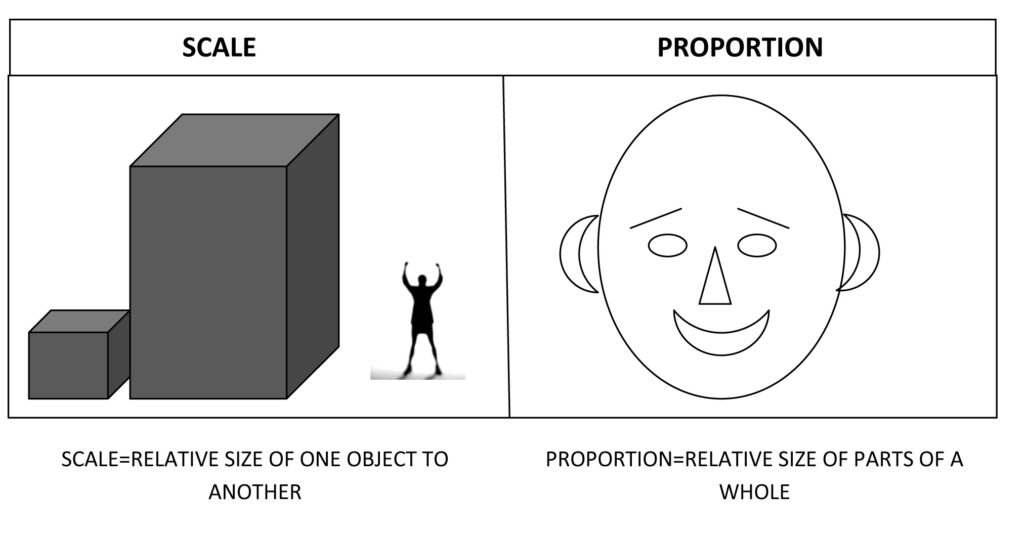
Proportion in art is about how different parts of a picture or sculpture relate to each other in terms of size.
It’s like making sure that if you’re drawing a person, their head isn’t as big as their body or their legs aren’t longer than their torso. It’s all about making things look right and balanced.
Scale in art is about how big or small something is in relation to its surroundings.
For example, if you draw a tiny house next to a giant tree, that’s playing with scale. It’s also about making sure that things in your artwork look the right size compared to real life.
So if you draw a car, it should look like a car you’d see on the road, not like a toy car.
To really understand scale, you might need to know the actual measurements of things in real life. That way, you can compare how big or small they are in your artwork.
What Is The Hieratic Scale?

The hieratic scale is like a visual trick that artists use to show what’s most important in their artworks.
It’s been around for ages, starting way back with the ancient Egyptians, around 3,000 BCE. They made their pharaohs bigger than everyone else in paintings and sculptures to show how powerful they were.
Later on, during the Middle Ages, artists used the same idea.
They’d make important figures like Jesus and the Virgin Mary bigger than everyone else in religious paintings. This made them stand out and showed their importance in the scene.
So, in simple terms, the hieratic scale is just about making the big things big to show they’re really important.
The Difference Between Scale And Proportion In Art
Here are the differences between scale and proportion in art:
| Concept | Scale | Proportion |
|---|---|---|
| Definition | The size relationship between an object or element and a standard measure. | The relative size and spatial relationships between different parts of an object or composition. |
| Relates to | Size in comparison to surroundings or a known unit of measurement. | Harmonious distribution and balance of visual elements within a given space. |
| Purpose | Create a sense of monumentality, intimacy, or distortion. Convey symbolic or expressive meanings. | Achieve aesthetic appeal, balance, and realistic representations (e.g., human figure). |
| Examples | Larger-than-life sculpture, miniature model, exaggerated or diminished scale. | Golden Ratio, human body proportions, anatomical relationships in figurative art. |
| Relationship | Scale and proportion often work together to create cohesive and visually appealing compositions. Proper proportions within elements enhance the overall sense of scale, and appropriate scale reinforces proportional relationships. |
The 7 Principles of Art
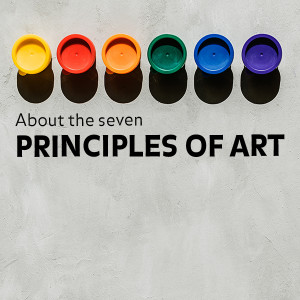
You can learn more about the other principles and elements of art in the linked articles below.
- Balance
- Contrast and Emphasis
- Movement and Rhythm
- Unity and Variety
- Harmony
- Pattern
- Proportions and Scale (we are reading about Scale and Proportion now!)
The 7 Elements of Art
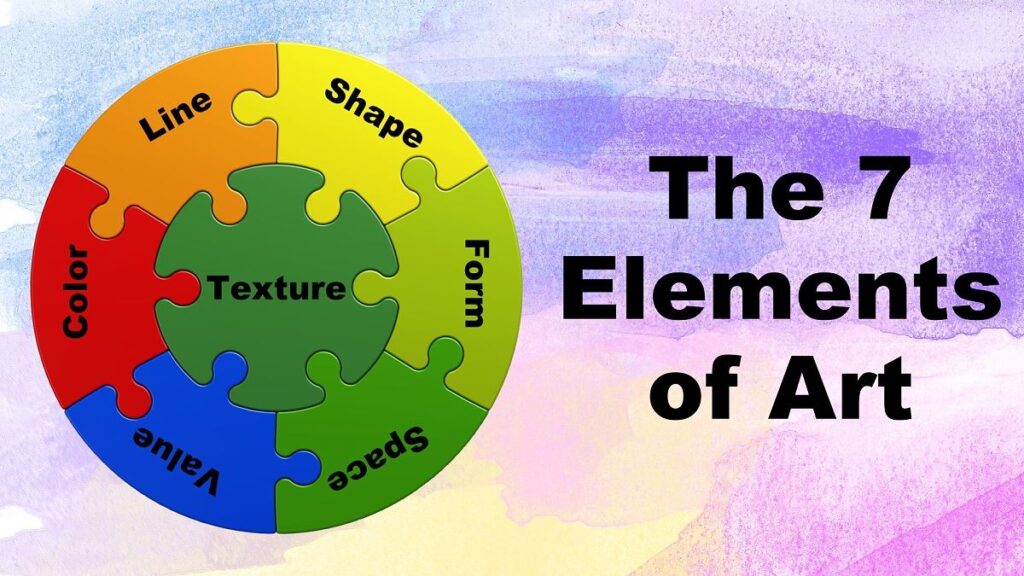
Large Scale Art
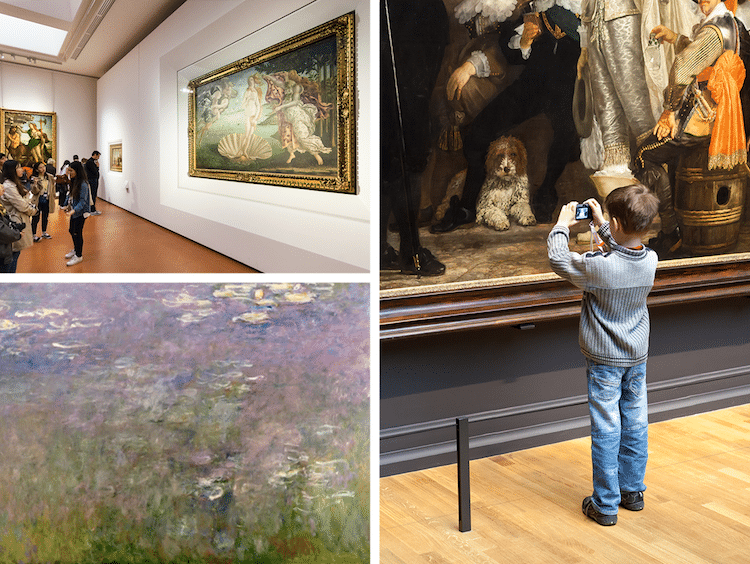
Large scale art is essentially artwork that’s much bigger than usual.
Think of it as art on steroids, but in a good way! When artists go big, they’re able to put in a lot more detail and really grab your attention.
Take Georges Seurat’s ‘A Sunday Afternoon on the Island of La Grande Jatte’ for example. It’s not just any painting; it’s a masterpiece made up of thousands of tiny dots of paint.
And get this – it’s as big as a small room! When you stand in front of it, you can see every single dot up close. It’s like magic happening right before your eyes.
So, large scale art isn’t just about size – it’s about making a big impact.
Whether it’s a giant sculpture or a massive canvas, it’s all about blowing your mind and making you feel something special.
Small Scale Art
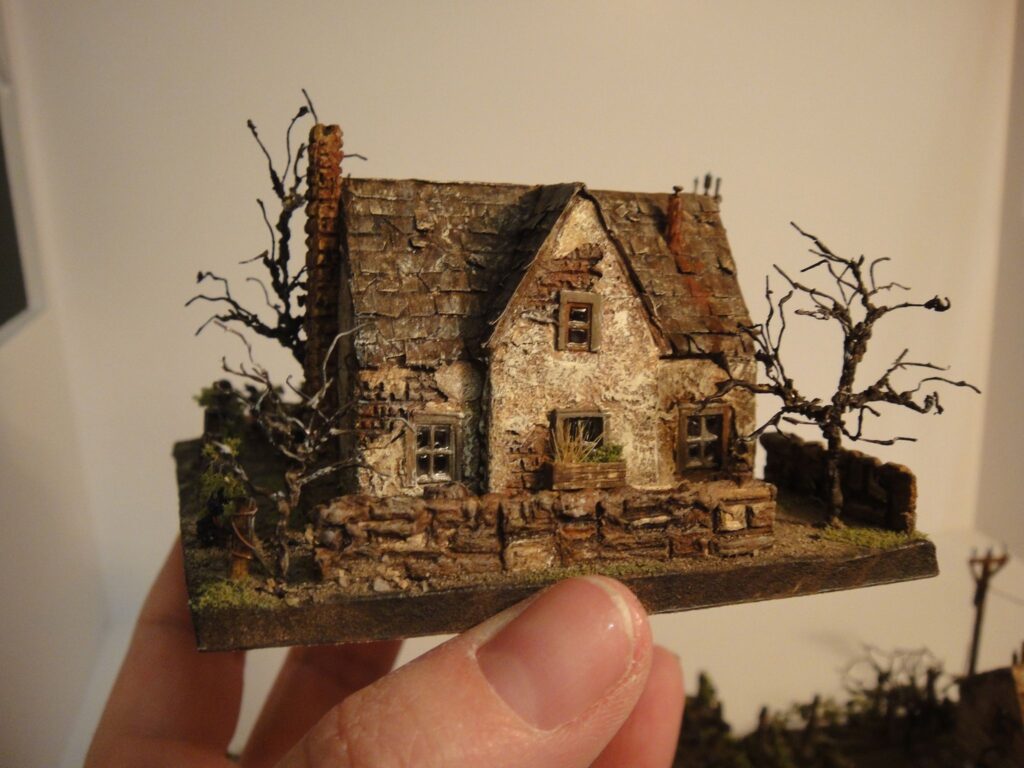
Small scale art refers to artwork that is smaller in size compared to real life.
This kind of art allows artists to focus on tiny details and create pieces that feel personal and intimate. It makes viewers pay closer attention to notice all the little elements.
Imagine a tiny sculpture that fits in your palm, or a small painting that you have to lean in to see properly. These are examples of small scale art. Even though they’re small, they can have a big impact on how you feel.
Take Johannes Vermeer’s painting ‘Girl With a Pearl Earring’ for example. It’s only about 17 inches tall, but it creates a strong and intimate feeling when you look at it.
This shows how small scale art can stir up emotions and connect with people on a personal level.
Types Of Proportion
There are four types of proportion in art: Standard Proportion, Altered Proportion, Hierarchical Proportion, and Out of Proportion.
Standard Proportion in Art
Standard proportion in art is like following a blueprint for creating artwork that looks realistic and believable.
It’s about making sure that the sizes and shapes of objects in your artwork match up with what we see in the real world.
Think of it this way: Imagine you’re drawing a picture of a landscape with a big tree in the front and mountains in the distance.
In reality, those mountains would be bigger than the tree because they’re farther away. But in art, we might make the tree look bigger than it really is to create a sense of depth and perspective.
As long as everything in the picture looks natural and believable, it’s following standard proportion.
So, standard proportion in art is about making artistic choices that make sense to our eyes, even if they don’t match up exactly with reality.
It’s all about creating an image that feels right to the viewer.
Altered Proportion in Art
Altered proportion in art is when artists purposely change the sizes of elements to make a particular point or create a certain effect. It’s like exaggerating certain parts to draw attention or convey a specific message.
Imagine looking at anime characters – their eyes are often made bigger and lips smaller than normal. This is a deliberate alteration of proportion to highlight certain facial features.
Another example is in chibi style drawings, where characters have unusually large heads compared to their bodies, making them look cute and playful.
So, altering proportion is all about playing with sizes to make something stand out or express a particular idea.
For instance, if an artist wants to show how tiny a bird is compared to a tree, they might make the bird even smaller or make the tree much bigger than usual to emphasize the contrast.
Hierarchical Proportion in Art
Hierarchical proportion in art is like giving VIP treatment to certain elements in a picture.
Back in ancient times, like the Dark Ages and the Middle Ages, and even way back with the ancient Egyptians, they used this a lot.
Basically, if someone was super important, they’d make them bigger in the artwork. It was a way to show who mattered the most.
But then, during the Renaissance period, artists started to prefer things to look more realistic. So, they moved away from this idea of making important people bigger and common folk smaller.
However, even today, artists sometimes bring back this hierarchical proportion trick, especially in surreal illustrations. It helps them make a big statement or emphasize something important in their art.
Out of Proportion in Art
Out of proportion in art refers to when the sizes of subjects within a piece don’t match up correctly.
Sometimes this happens on purpose to make a statement, while other times it’s accidental because the artist might lack experience or concentration.
Deliberately, artists might exaggerate proportions to make a point. For example, they might depict a very large, muscular man holding a tiny puppy. This stark difference in size can emphasize the contrast between them.
However, sometimes out of proportion happens unintentionally, especially for beginner artists. For example, drawing one eye smaller than the other can happen by mistake but still falls under the out of proportion category.
The Use of Proportion in Art
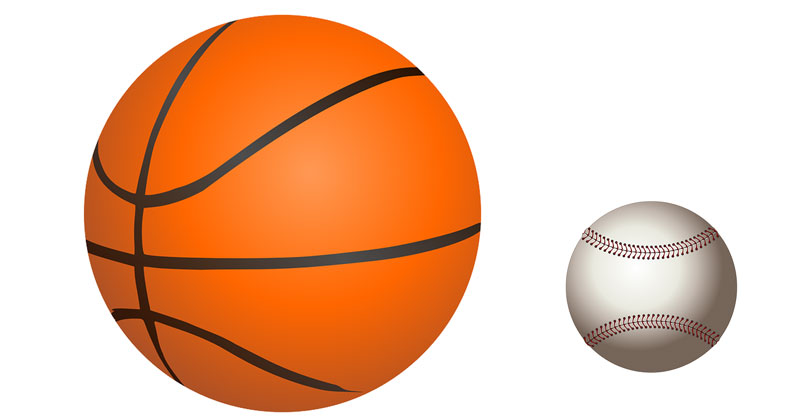
Proportion in art is like a magic wand that artists wave to create different effects and feelings in their work. Imagine you’re painting a picture, and you want to make people laugh.
You might use proportion by putting a tiny hat on a big animal or a big hat on a tiny person, making it look funny. This is called juxtaposition, and it adds humor to the art.
Proportion also helps artists decide where to put things in their art. If they want something to seem closer to you, they’ll make it bigger. If it’s supposed to be far away, they’ll make it smaller. This helps create depth and makes the picture more interesting to look at.
Nowadays, artists have a lot of freedom. They don’t always have to follow the rules of proportion to make something beautiful.
In fact, sometimes breaking the rules can make their art even more special and unique. But it’s still good for artists to know the rules so they can choose when to follow them and when to break them in a cool way.
Conclusion
In the intricate tapestry of art, scale and proportion stand as silent architects, shaping our perceptions and emotions with their dynamic interplay.
Scale, with its ability to evoke awe or intimacy, transports us through realms of wonder and familiarity, whether in the presence of colossal sculptures or diminutive paintings.
Proportion acts as the harmonizing force, ensuring coherence and balance within the artwork, preventing disproportionate elements from disrupting the viewer’s immersion.
From ancient hieratic scales to modern artistic freedoms, these elements continue to guide our journey through the captivating world of visual storytelling, reminding us of the timeless power they hold in capturing the essence of human experience.


Leave a Reply